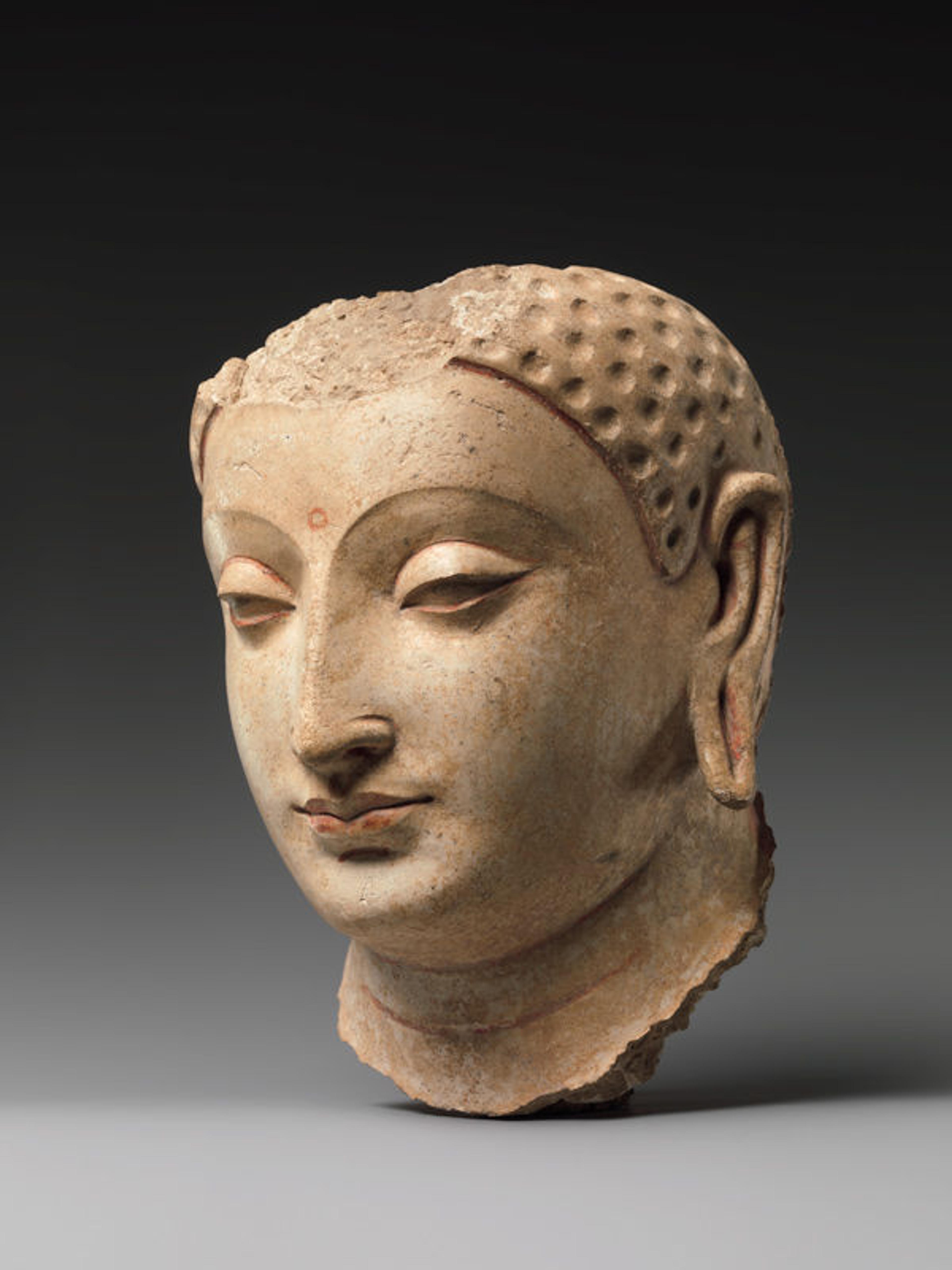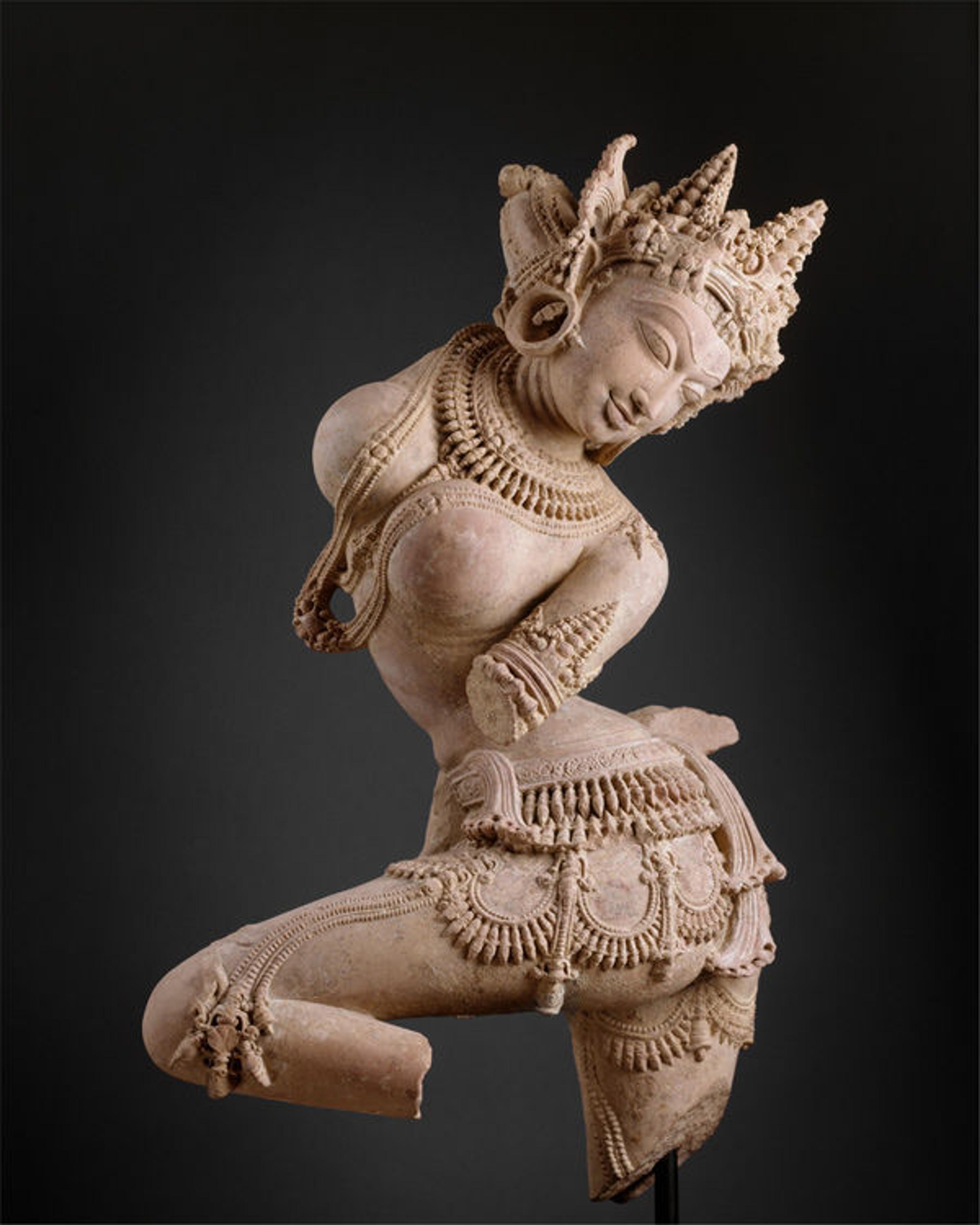«The three-part Gods and Goddesses lecture series, which concluded on September 30, attempted to broadly address the multifaceted deities of the Hindu, Buddhist, and Jain religions—faiths that are at the foundation of South Asia's great sculptural tradition. The first lecture began with Buddhism, tracing its image-making tradition that emerged to give manifest form to the Buddha's enlightened relics. Over time it continued to reflect developments within the Buddhist tradition, with the imagery becoming more complex as artists strove to represent subtle aspects of ideology.»

Head of Buddha, 5th–6th century. Afghanistan (probably Hadda). Stucco with traces of paint; H. 7 1/4 in. (18.4 cm). The Metropolitan Museum of Art, New York, Rogers Fund, 1930 (30.32.5)
The second talk was an attempt to consider some of the main features of the Hindu image-making tradition. To this end the major deities were introduced and the significance of temple architecture was considered.

Dancing Celestial Deity (Devata), early 12th century. India (Uttar Pradesh). Sandstone; H. 33 1/2 in. (85.1 cm). The Metropolitan Museum of Art, New York, Promised Gift of Florence and Herbert Irving (L.1993.88.2)
In the last session, Jain imagery was touched upon, and again the issue of how the image related to key ideological concepts was explored. Finally, the complex issue of Tantra, as it is applied to the Buddhist tradition, was discussed.

Mandala of Jnanadakini, late 14th century. Sakya School. Tibet. Distemper on cloth; Image: 29 1/2 x 33 in. (74.9 x 83.8 cm). The Metropolitan Museum of Art, New York, Purchase, Lita Annenberg Hazen Charitable Trust Gift, 1987 (1987.16)
While these lectures only provided a compelling introduction to these themes, it is my hope that they laid a foundation for better understanding the Metropolitan Museum's wonderful collection of South Asian sculpture. To my mind it is the subtle ideas that underlie these religions that motivated artists to create evocative and profound images; more to the point, I believe that the artworks are most accessible when viewed in this light. Leading this talk series was great fun, and afterwards I conversed with many engaged audience members who had a desire to approach the material even more deeply. Below is a bibliography of various readings and a fact sheet that I hope will help give shape to the traditions of these major religions.